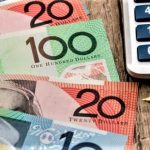US Dollar (USD) extended its rebound into Friday’s trading session, buoyed by better-than-expected economic data and revived optimism surrounding international trade negotiations. After dipping to a two-week low earlier this week, the Dollar found firm support near the psychological 97.00 level on the US Dollar Index (DXY), now hovering around 97.76 up 0.27% for the day.
Markets, however, remain cautious ahead of next week’s Federal Reserve monetary policy decision and the looming August 1 tariff deadline, key events that could shape risk sentiment and determine the near-term trajectory for the Greenback.
Solid US Data Eases Recession Concerns
The bullish momentum for the Dollar fueled in part by upbeat US macroeconomic indicators. Initial Jobless Claims came in below expectations on Thursday, reinforcing the resilience of the US labor market. Additionally, steady performance in key Purchasing Managers Index (PMI) readings suggested continued growth in both manufacturing and services, easing fears of an imminent economic slowdown.
These figures help bolster the narrative that the US economy remains robust, even as global economies show signs of strain amid elevated borrowing costs and ongoing geopolitical tensions.
US Dollar Index (DXY) Holds Above Critical Support
Technically, the US Dollar Index found strong support at the 97.00 level, a zone that has held firm in recent weeks despite periodic bouts of volatility. The bounce back to 97.76 suggests that buyers are stepping in ahead of next week’s crucial events, particularly the FOMC policy decision and tariff implementation deadline.
The DXY’s current performance reflects a confluence of optimism about US resilience and apprehension about potential policy shifts from the Fed.
Trump’s Visit to the Fed Sparks Independence Debate
Adding to the complexity was a high-profile visit by US President Donald Trump to the Federal Reserve headquarters, his first since taking office and the first by any sitting president in nearly 20 years. Ostensibly a tour of the Fed’s $2.5 billion renovation project, the visit quickly turned political.
President Trump criticized alleged cost overruns, claiming the project ballooned to $3.1 billion. Fed Chair Jerome Powell responded promptly, clarifying that the additional costs were tied to previous renovations and did not reflect recent budgetary issues.
However, the real tension came from Trump’s renewed pressure on the Fed to cut interest rates, claiming the central bank was “moving too slowly” and that easing was necessary to sustain growth. While Trump stated he had no intention to remove Powell “for now,” the visit stirred fresh controversy over the Fed’s independence, a principle deemed critical for maintaining market confidence.
Fed Outlook: Split Among Officials Clouds Rate Path
As the July FOMC meeting nears, a clear divide among Fed officials is emerging. Some dovish members — including Governor Christopher Waller and Vice Chair Michelle Bowman argue for a 25 basis point rate cut, citing trade-related inflationary pressures as temporary and suggesting that preemptive easing could support economic momentum.
Conversely, Powell and a majority of the board favor a more patient approach, emphasizing the risks of reigniting inflation if tariff-induced price increases prove persistent. Markets are largely expecting the Fed to hold rates steady next week, but September remains a key month to watch, with two cuts priced in by year-end.
Treasury Yields Stabilize as Market Awaits Fed Signals
US Treasury yields have stabilized following a volatile week. The benchmark 10-year note hovers around 4.39%, reflecting investor caution ahead of next week’s Fed decision. While recession fears have abated slightly, the prospect of prolonged high inflation and geopolitical uncertainties continues to weigh on market sentiment.
Futures pricing shows markets are currently expecting around 43 basis points of cuts by the end of 2025, with most forecasts pointing to rate reductions in September and December.
Trade Optimism Returns: Multiple Deals Nearing Completion
Optimism on the trade front has also underpinned recent US Dollar gains. Washington has successfully finalized five key bilateral trade agreements in recent weeks including with Japan, the Philippines, Vietnam, Indonesia, and the United Kingdom. A preliminary deal has also been struck with China, though finalization is pending.
Negotiations continue with the European Union, South Korea, and India, as countries race to avoid punitive tariffs set to take effect on August 1. The EU, in particular, seeks a deal modeled on the US-Japan agreement, proposing a 15% base tariff with sector-specific exemptions to avoid an automatic 30% tariff hike.
South Korea Offers $100 Billion Investment to Avoid Tariffs
South Korea is making aggressive overtures to secure a trade deal, with Industry Minister Kim Jung-kwan and Trade Envoy Yeo Han-koo meeting with US Commerce Secretary Howard Lutnick in Washington. Seoul is proposing a $100 billion investment package led by conglomerates like Samsung and Hyundai in hopes of sidestepping a 25% tariff on electronics, automobiles, and key industrial exports.
This package underscores the global economic stakes as countries scramble to maintain market access to the world’s largest economy.
Trump Visits UK Amid Trade Talk Priorities
President Trump landed in Scotland on Friday for a multi-day visit focused on business and diplomacy. He is scheduled to meet newly elected UK Prime Minister Keir Starmer on Monday, with a revamped US-UK trade agreement topping the agenda.
Key sticking points include tariffs on British exports such as steel, whisky, and pharmaceuticals as well as regulatory alignment on agriculture and technology sectors. Trump aims to negotiate a tougher, more reciprocal trade arrangement that reflects his broader hardline stance.
Tariff Plans Reveal Trump’s Economic Strategy
Earlier this week, President Trump declared a significant escalation in his trade policy, announcing that future tariffs would range from 15% to 50%, sharply above the initial 10% baseline proposed months ago. These punitive measures are intended for countries that do not open their markets fully to US goods and services.
This hardline stance appears to be part of a broader election-year strategy aimed at showcasing economic nationalism and toughness on trade a theme likely to dominate headlines through November.
Durable Goods Orders May Test Economic Resilience
The next key data release is June’s Durable Goods Orders, due Friday at 12:30 GMT. Markets expect a steep -10.8% decline, primarily due to a normalization after May’s aircraft-driven surge of 16.4%. While headline numbers may appear weak, analysts will be watching closely for core capital goods and non-defense orders, which offer deeper insight into business investment trends.
Any upside surprise could further validate the view that the US economy remains resilient and add strength to the Dollar heading into next week.
Conclusion: US Dollar Finds Firm Ground Ahead of High-Stakes Week
The US Dollar is entering a critical week on strong footing, supported by upbeat data, improving trade sentiment, and a market-friendly yield environment. However, the path ahead riddled with risks including Fed policy signals, Trump’s aggressive tariff agenda, and fragile global trade dynamics.
Whether the Greenback can maintain momentum will depend largely on how the Fed communicates its policy stance and how smoothly trade negotiations proceed in the final stretch before the August 1 deadline.
Disclaimer: This blog is for informational purposes only and does not constitute financial advice. Always conduct your own research and consult a professional advisor before making investment decisions.
[sc_fs_multi_faq headline-0=”h2″ question-0=”Why is the US Dollar rising right now?” answer-0=”The US Dollar is rising due to strong economic data, improved trade optimism, and technical support near 97.00 on the DXY. Markets are also adjusting expectations ahead of the Federal Reserve’s policy decision next week.” image-0=”” headline-1=”h2″ question-1=”What is the Federal Reserve expected to do in its upcoming meeting?” answer-1=”The Fed is widely expected to keep interest rates steady in July. However, the market anticipates potential rate cuts in September and December due to growing political and economic pressure. ” image-1=”” headline-2=”h2″ question-2=”How is Trump’s trade policy impacting the Dollar?” answer-2=”Trump’s trade policy, especially aggressive tariffs, is affecting global risk sentiment and supply chains. While it creates short-term uncertainty, successful trade deals are supporting the Dollar as they boost US export prospects. ” image-2=”” count=”3″ html=”true” css_class=””]









